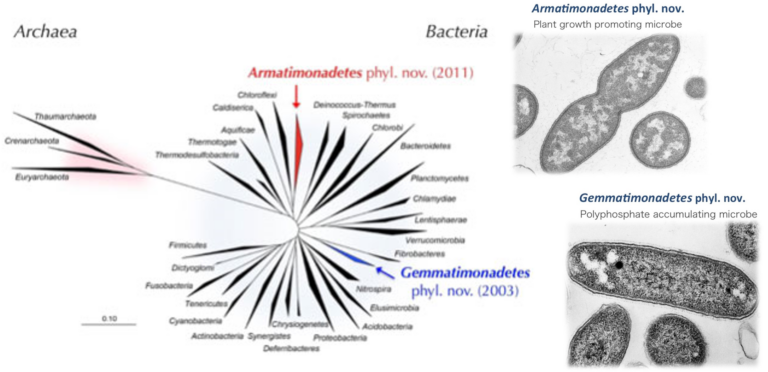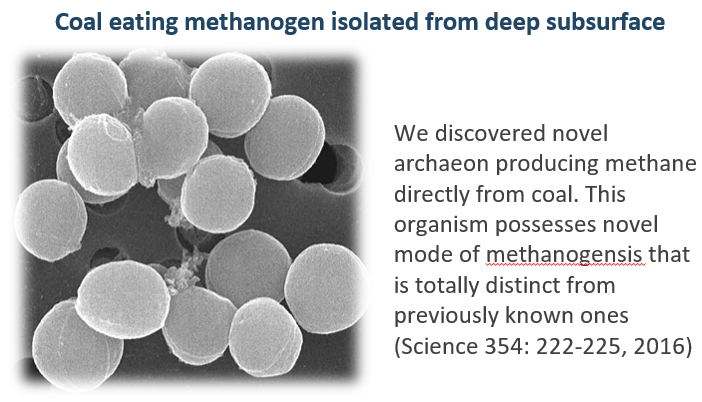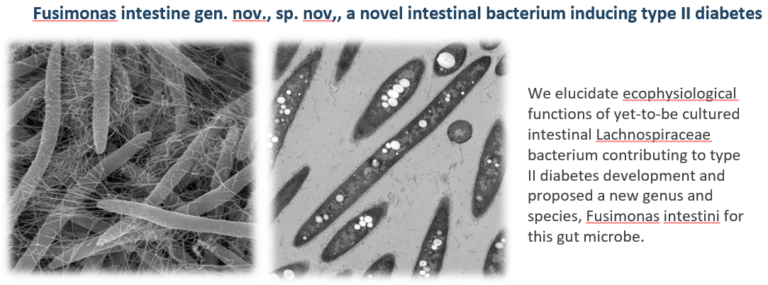To search for uncultured microorganisms, we have developed new strategies to isolate microorganisms that resist conventional cultivation. Using those methods, we have succeeded in isolating a number of yet-to-be cultured microorganisms from various natural and artificial environments including soils, freshwater sediments, hot springs, composts, activated sludge, deep subsurface waters and sediments. Indeed, novel taxonomic names of 65 species, 37 genera, 11 families, 8 orders, 5 classes, and 2 phyla have been proposed since 2000. In particular, we isolated a new phylum bacterium, Gemmatimonas aurantiaca, and proposed a new phylum, Gemmatimonadetes in 2003. We further succeeded in isolating another new phylum bacterium, Armatimonas rosea, belonging to the formally called candidate phylum OP10 that was one of the most widely recognized uncultured phyla. A novel bacterial phylum, Armatimonadetes, was approved by International Committee on Systematics of Prokaryotes (ICSP) in 2011. Recently, we isolated novel microorganisms with unique functions: a type II diabetes inducing intestinal Lachnospiraceae bacterium, Fusimonas intestini gen. nov., sp. nov., a coal-eating deep subsurface methanogen with the novel mode of methanogenesis (Science 2016). In 2020, JAMSTEC and our group in AIST is successful of isolating a novel archaeon (belongs to so-called “Asgard” archaea superphylum) at the prokaryote–eukaryote interface and proposes a new evolutionary model for eukaryogenesis (Nature 2020).




